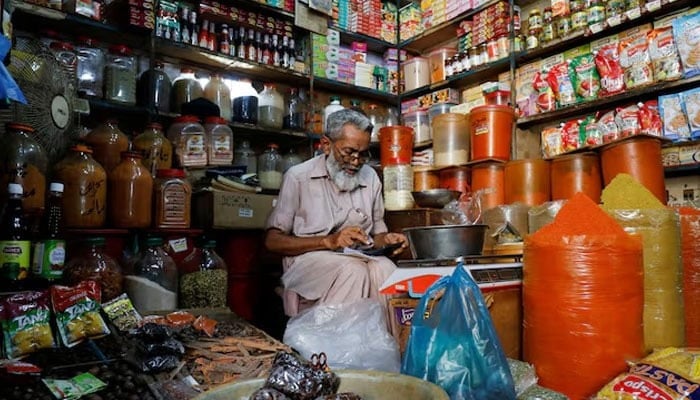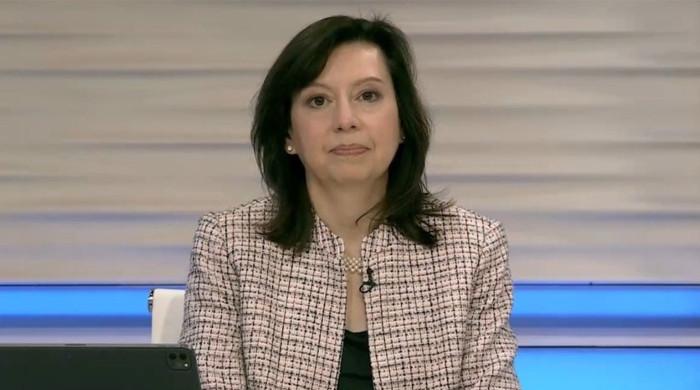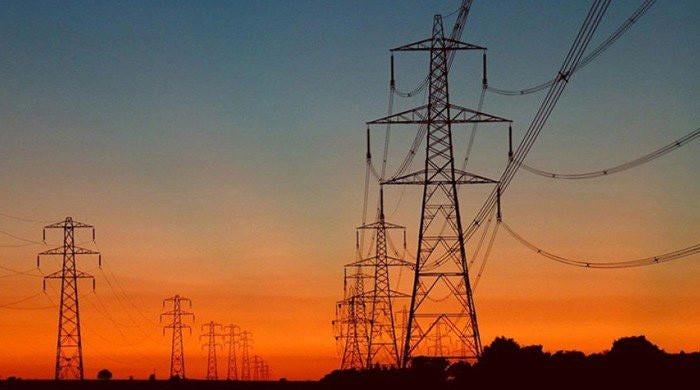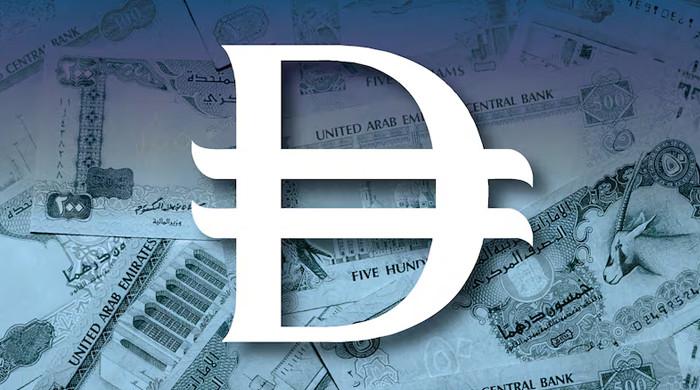Finance ministry projects 8-9% inflation for Sept-Oct as CPI hits 34-month low
Inflation for August stood at 9.6% on year-on-year basis, compared with 27.4% in same month a year earlier, report says
September 27, 2024

- Report says economy shown recovery signs in 2 months of FY25.
- Says major sectors improved, suggesting optimistic export outlook.
- Data shows CAD contracted, while fiscal sector remained resilient.
Pakistan's headline inflation is anticipated to ease further over the next two months, likely hovering between 8-9%, the Finance Division said on Friday, forecasting the recovery to stay on course down the line.
In its 'Monthly Economic Update and Outlook', the ministry reported that the Consumer Price Index (CPI) fell to single digits in August 2024, marking a 34-month low, and is projected to decline further in the short term.
Inflation for August stood at 9.6% on a year-on-year basis, compared with 27.4% in the same month a year earlier, the report showed.
The ministry also noted that Pakistan's economy had shown signs of recovery in the first two months of fiscal year 2025.
"Inflation has dropped to single digits, industrial output has strengthened, and major export sectors have experienced growth, suggesting an optimistic export outlook," the report added.
According to the report, the current account deficit (CAD) contracted, while the fiscal sector remained resilient, mainly attributed to prudent measures. “This trajectory is expected to continue in the coming months.”
The Large Scale Manufacturing (LSM) output increased by 2.4% in July 2024, rebounding from a contraction of 5.4%, reflecting improved market conditions and support. During this period, 14 out of 22 sectors witnessed positive growth.
Additionally, production and sales of all vehicles saw an increase of 19.5% and 16.3%, respectively, during Jul-Aug FY2025.
In July FY2025, net federal revenues grew by 7.2% to Rs408.4 billion from Rs380.9 billion in the last fiscal. The growth in revenues was realized on the back of a 22.6 % increase in tax collection and a 20.5% rise in non-tax collection.
Meanwhile, total expenditures grew by 19.2% to Rs768.6 billion in July FY2025, up from Rs644.9 billion in the last year. Consequently, the fiscal deficit was recorded at 0.3% of GDP, compared to 0.2% of GDP in the same month last year. The primary balance managed to post a surplus of 0.1% of GDP compared to 0.3% of GDP last year.
During Jul-Aug FY2025, the FBR's net tax collection grew by 20.6% to Rs1,456 billion, compared to Rs1,207.5 billion during the same period last year. In August 2024, the FBR collected 19.0% more taxes, reaching Rs796 billion from Rs669 billion last year.
The external account position has strengthened due to improved exports and remittances, though imports also increased. During Jul-Aug FY2025, the current account registered a deficit of $0.2 billion compared to $0.9 billion last year.
However, it recorded a surplus of $75 million in August 2024. During Jul-Aug FY2025, goods exports increased by 7.2%, reaching $4.9 billion, while imports stood at $9.5 billion compared to $8.4 billion last year, leading to a trade deficit of $4.7 billion.
Meanwhile, amid diminishing inflationary pressures, improved inflation expectations, and business confidence, the Monetary Policy Committee (MPC) cut the policy rate by 200 basis points to 17.5% in its decision held on September 12, 2024.
During July 1–August 30, FY2025, money supply (M2) showed negative growth of 2.6% (Rs -962.3 billion) compared to negative growth of 1.4% (Rs -449.5 billion) last year.
In the social safety sector, BISP has raised the quarterly instalment of the Kafalat Programme from Rs10,500 to Rs13,500 starting in January 2025, with the number of benefiting families expected to reach 10 million (1 crore) by the end of this year.
According to the report, following a phase of decline, LSM is now regaining its footing, and major exporting sectors are showing readiness to scale up production.
This recovery is expected to be bolstered by a favourable external environment, a stable exchange rate, and declining inflationary pressures. Moreover, an accommodative monetary policy stance, improved investor confidence, and global market recovery will provide additional support to foster sustainable industrial growth.
The government's commitment to fiscal consolidation will contribute to improved fiscal accounts. In agriculture, the outlook for Kharif 2024 production—dependent on weather as a critical factor—will pave the way for productivity. Inflation is expected to remain within the range of 8.0% to 9.0% in September and October 2024.
On the external front, exports and imports are expected to gain momentum. In September 2024, exports are likely to remain within the range of $2.5-3.0 billion, imports at $4.5-5.0 billion, and workers’ remittances at $2.7-3.2 billion.











